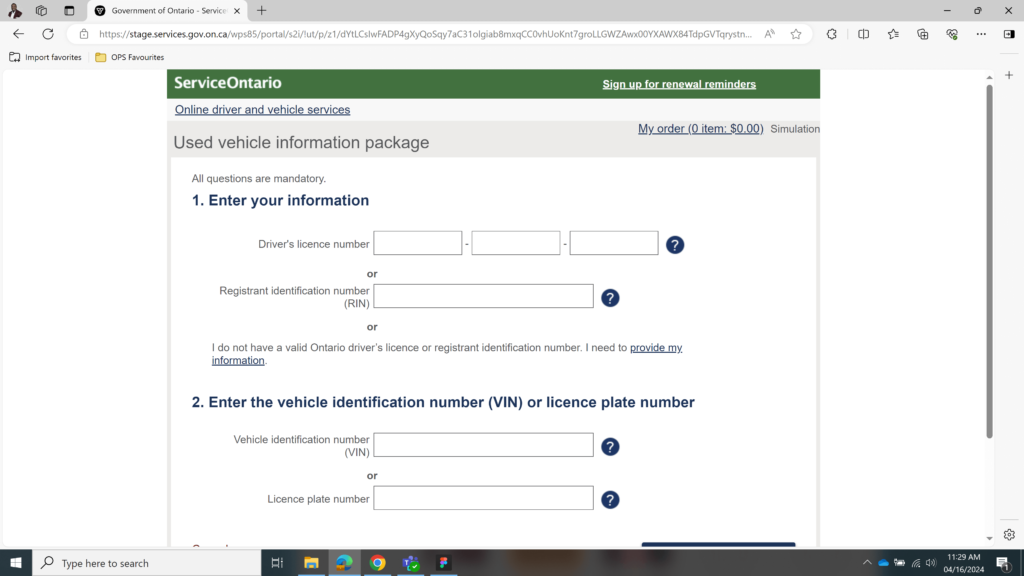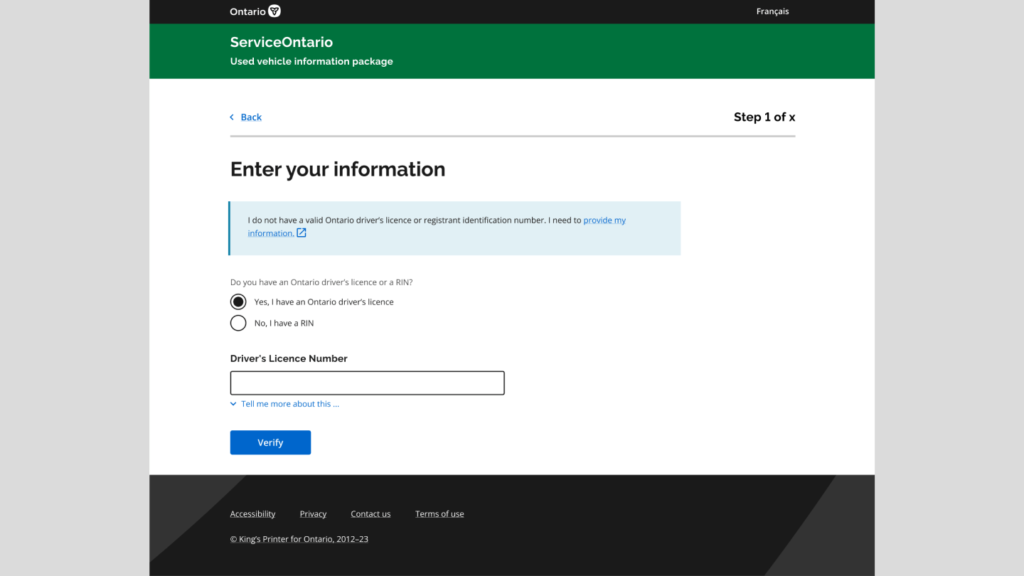Enhancing Usability for the Government of Ontario’s Web Applications
The Government of Ontario required an upgrade of its web applications to boost user efficiency, comply with the new Ontario Design System (ODS) guidelines, and integrate modern best practices for accessibility (WCAG 2.0) and usability.
The problem
Each year, millions of Ontario residents rely on the Government of Ontario’s web apps for tasks such as renewing driver’s licenses, paying fines, and purchasing license plates. With the province’s growing population, these applications required a redesign to enhance service delivery and alleviate the workload on government personnel.
Image gallery
Before the redesign
Old user interfaces, like the one shown below, were adequate ten years ago. However, today’s business requirements demand substantial improvements.
After the redesign
More modern interfaces place a greater focus on users, implement modern design patterns, and adhere to the new Ontario Design System (ODS) guidelines.
Technical Process
The technical process encompassed multiple micro-projects, including renewing driving licenses, paying fines, and paying for license plates. Each project involved developing a distinct web application designed to facilitate specific user tasks, all concluding with a checkout process. Highlighted below are two of the most noteworthy web applications that have undergone redesign:
Challenge
The primary challenge in redesigning these applications was managing system errors encountered during production. Designs needed to be precise to address these issues effectively and flexible enough to accommodate unexpected server-side errors.
Web App 1: Used vehicle Information Package (UVIP)
The Used Vehicle Information Package (UVIP), a legally required document for used car sellers in Ontario, contains comprehensive vehicle details and history for potential buyers. The redesigned web app simplifies the ordering process by breaking it into manageable steps to maintain user’s focus, reducing cognitive effort through streamlined business logic, and effectively handling both system and user errors to ensure a smooth user experience while discouraging hacking attempts.
An exciting aspect of the project
The error-handling aspect of the project was both challenging and exciting. The new designs provided enough clarity to assist users effectively while remaining intentionally vague to deter hackers’ phishing techniques.
Web App 2: Default fines and driver’s license
The Default Fines and Driver’s License (DFDL) web app helps Ontario residents pay unpaid fines, reinstate their driver’s licenses, and more. As one of Ontario’s most complex web apps, the DFDL handles multiple sub-processes and a variety of cases. The new design connects these sub-processes into a seamless experience, simplifies error handling by linking non-sensitive errors to specific steps making it easy for users to address, and streamlines the checkout process by prioritizing key information such as payment summaries and terms and agreements.
Conclusion & Key Takeaways
The new design received high praise from the province, who valued our thorough research of each solution, exploration of multiple avenues, and selection of the most flexible and realistic solutions. By reinvesting lessons learned from previous projects, we ensured smoother delivery and increased client satisfaction. While it is still early to determine the impact on the province’s return on investment, we are confident in the positive outcomes of the new look and feel.
Lessons Learned
- Lesson 1: There is always more than meets the eye.
- Lesson 2: Careful observation of stakeholders can lead to better outcomes.
During a design evaluation, I observed the technical director’s calm hesitation. Upon further inquiry, it became clear he was concerned that the designs couldn’t address all potential server-side errors, which numbered over 500. This insight prompted a reassessment of the design’s flexibility, ensuring it could accommodate unforeseen situations and future business logic expansions.

